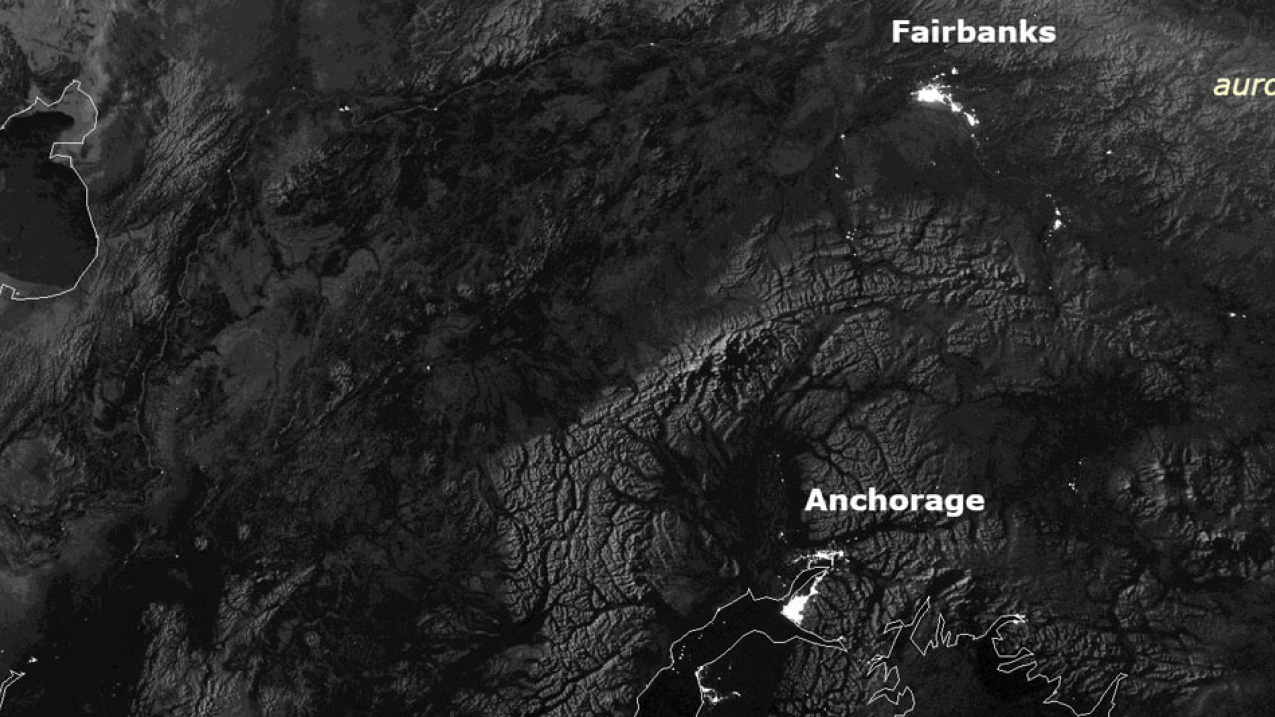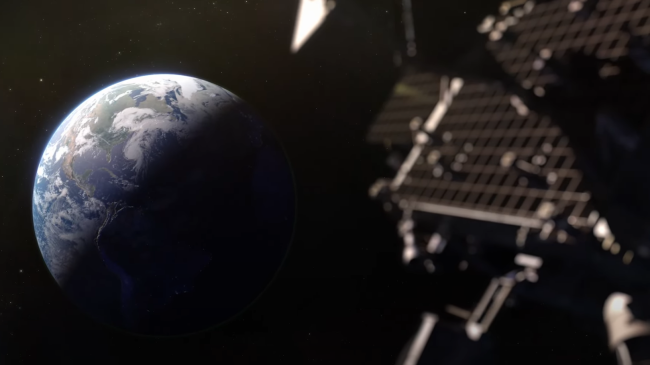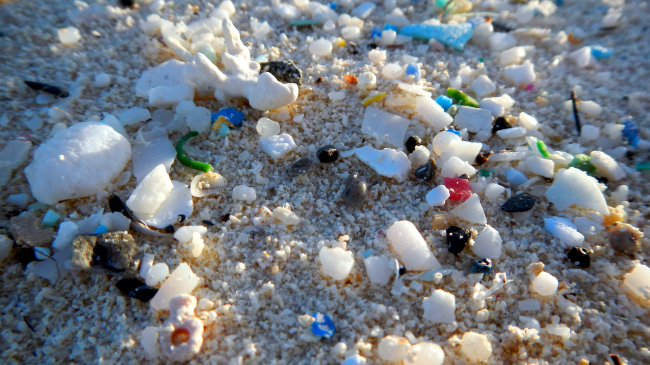
This image of Alaska was taken by the Visible Infrared Imaging Radiometer Suite's (VIIRS) Day-Night Band aboard NOAA's Suomi NPP satellite. The new JPSS-1 satellite will also have this instrument, which can see visible-spectrum light at night. This band allows forecasters to view features such as clouds, fog, smoke and even lights at night, which is an important feature for states like Alaska that have long nights in winter. (Image credit: NOAA NESDIS)
On Tuesday, Nov. 7, experts from NOAA will discuss how information from JPSS-1, the first in a series of four advanced NOAA polar-orbiting satellites called the Joint Polar Satellite System, will be used by scientists to help improve weather and natural hazard forecasts in Alaska.
The instruments aboard the new satellite will provide more than 40 data products, many critical for Alaska, including: atmosphere temperature and moisture profiles, precipitation type and rate, clouds and fog, winds, sea surface temperature and ocean color, sea ice extent, snow cover and depth, vegetation greenness indices and health, and volcanic ash and fire detection.
JPSS data increases the timeliness and accuracy of forecasts three to seven days in advance of severe weather events. These forecasts allow for early warnings and enable emergency managers to make timely decisions to protect lives and property, including ordering effective evacuations. In Alaska, JPSS supports essential forecasting for the economically vital aviation, maritime, oil and gas and fisheries industries.
UPDATE: The ULA Delta II rocket carrying the JPSS-1 mission for NASA and NOAA is delayed due to a faulty battery. The delay allows the team time to replace the battery on the Delta II booster. The vehicle and spacecraft remain stable. Launch of the JPSS-1 mission is scheduled for no earlier than Tuesday, Nov. 14, 2017.
WHEN
Tue., Nov. 7, 11:00 - 11:45 a.m. Alaska Time (12:00 – 12:45 p.m. Pacific Time)
WHO
-
Dr. Mitch Goldberg, JPSS program scientist, NOAA Satellite and Information Service
-
Nate Eckstein, science infusion and technology transfer meteorologist, NOAA National Weather Service, Alaska Region
WHAT
Conference Call
-
Presentations
-
Questions and answers
HOW
To participate, U.S. and Canadian media may call 1-888-469-0872 toll-free. Other international media may call 1-517-308-9160 (toll call). Please use the passcode "JPSS."
FOR MORE INFORMATION
Contact
Brady Phillips, 202-407-1298



